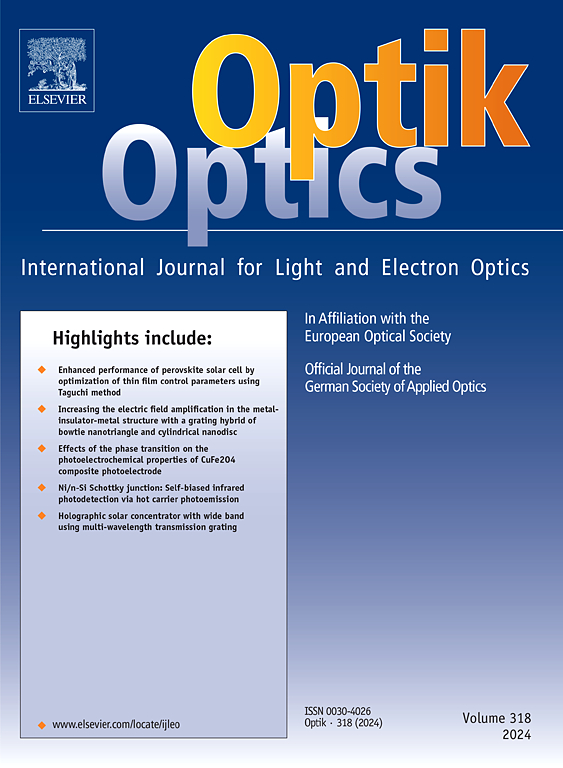Enhanced THz emission from unmagnetized plasma using quadratically chirped HChG laser pulse
IF 3.1
3区 物理与天体物理
Q2 Engineering
引用次数: 0
Abstract
Terahertz (THz) radiation generation through laser-plasma interactions has emerged as a promising approach for producing high-intensity, broadband THz sources. In this study, we investigate the enhancement of THz emission by employing a quadratically chirped Hermite-Cosh-Gaussian laser beam interacting with an underdense plasma. The purpose of this study is to investigate the enhancement of THz emission by employing a quadratically chirped Hermite-Cosh-Gaussian laser beam interacting with an underdense plasma. Tailoring the chirp profile significantly amplifies asymmetric electron motion and transient nonlinear currents, resulting in the generation of stronger and more tunable THz radiation. The results reveal that there is a significant relation between the THz field profile and laser parameters like the chirp parameter , decentred parameter , and mode index of the Hermite function. Numerical analysis demonstrates that quadratic chirping optimizes the phase matching between the driving beam and the plasma response, resulting in an increased THz yield and a broader spectral bandwidth compared to conventional linear chirping. Our results reveal that the application of quadratic chirp improves temporal phase matching, enhances nonlinear electron motion, and leads to a notable increase in THz field amplitude. We observe that higher-order spatial modes and optimal decentering further amplify the THz yield, and the maximum enhancement is achieved at lower chirp values compared to linear chirping. There is a significant enhancement of THz amplitude at a lower value of the chirp parameter, i.e. .These findings underscore the efficacy of chirp engineering as a strategic tool for designing next-generation THz sources based on laser–plasma platforms. The proposed framework holds significant promise for applications in broadband spectroscopy, secure wireless communication, medical diagnostics, and ultrafast material characterization.
利用二次啁啾HChG激光脉冲增强非磁化等离子体的太赫兹辐射
通过激光等离子体相互作用产生太赫兹(THz)辐射已经成为产生高强度宽带太赫兹源的一种有前途的方法。在这项研究中,我们通过使用二次啁啾厄米- cosh -高斯激光束与低密度等离子体相互作用来研究太赫兹辐射的增强。本研究的目的是利用二次啁啾厄米- cosh -高斯激光束与低密度等离子体相互作用来研究太赫兹辐射的增强。剪裁啁啾剖面显著放大了不对称电子运动和瞬态非线性电流,从而产生更强、更可调谐的太赫兹辐射。结果表明,太赫兹场廓形与啁啾参数b、去心参数d和埃尔米特函数的模指数m等激光参数有显著的关系。数值分析表明,与传统线性啁啾相比,二次啁啾优化了驱动光束与等离子体响应之间的相位匹配,从而提高了太赫兹产率和更宽的频谱带宽。结果表明,二次啁啾的应用改善了时间相位匹配,增强了非线性电子运动,导致太赫兹场振幅显著增加。我们观察到,高阶空间模式和最佳去中心化进一步放大了太赫兹产率,并且与线性啁啾相比,在较低的啁啾值下实现了最大的增强。在较低的啁啾参数值(即b=0.0099)下,太赫兹幅值显著增强。这些发现强调了啁啾工程作为设计基于激光等离子体平台的下一代太赫兹源的战略工具的有效性。该框架在宽带光谱学、安全无线通信、医疗诊断和超快材料表征等领域具有重要的应用前景。
本文章由计算机程序翻译,如有差异,请以英文原文为准。
求助全文
约1分钟内获得全文
求助全文
来源期刊

Optik
物理-光学
CiteScore
6.90
自引率
12.90%
发文量
1471
审稿时长
46 days
期刊介绍:
Optik publishes articles on all subjects related to light and electron optics and offers a survey on the state of research and technical development within the following fields:
Optics:
-Optics design, geometrical and beam optics, wave optics-
Optical and micro-optical components, diffractive optics, devices and systems-
Photoelectric and optoelectronic devices-
Optical properties of materials, nonlinear optics, wave propagation and transmission in homogeneous and inhomogeneous materials-
Information optics, image formation and processing, holographic techniques, microscopes and spectrometer techniques, and image analysis-
Optical testing and measuring techniques-
Optical communication and computing-
Physiological optics-
As well as other related topics.
 求助内容:
求助内容: 应助结果提醒方式:
应助结果提醒方式:


